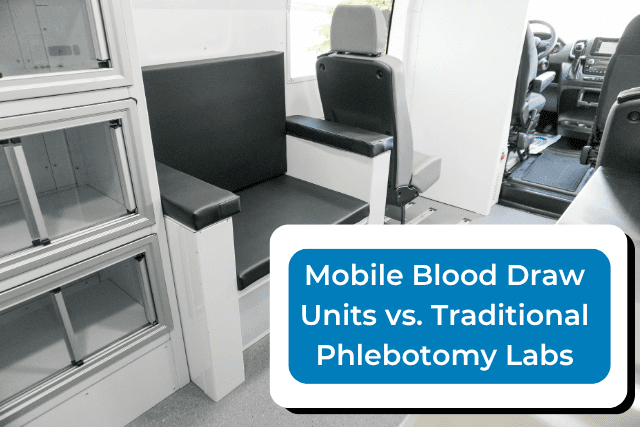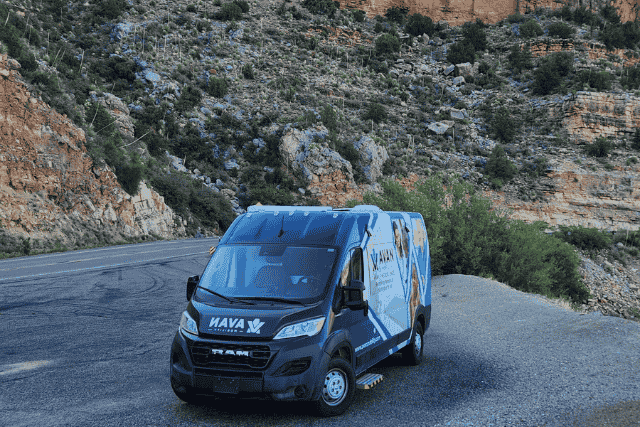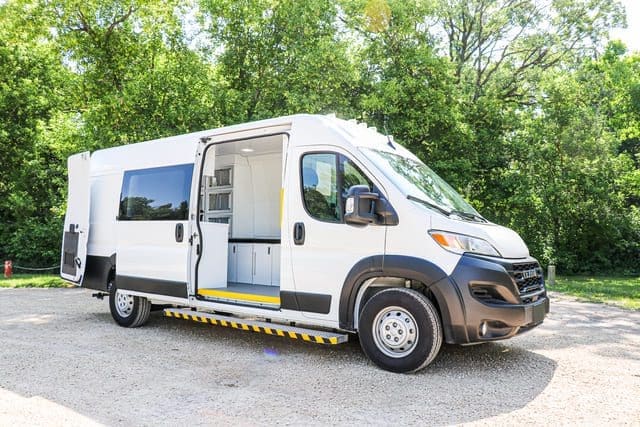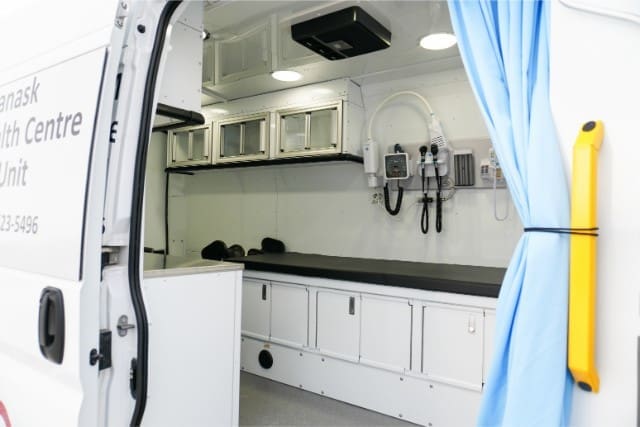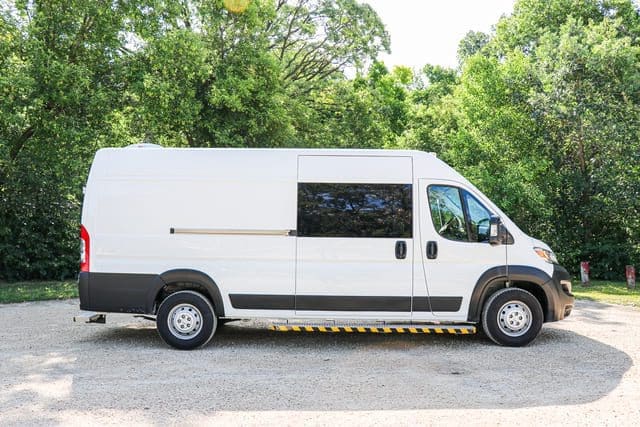Mobile blood draw units are changing the way healthcare reaches people. But if your clinic relies only on a traditional phlebotomy lab, you might feel the gap growing. Some patients simply can’t make it to you. Maybe they live in rural areas, can’t drive, or can’t afford gas. Others may be elderly or homebound. Meanwhile, your lab sits ready, but some people miss the care they need.
That gap hurts. Missed blood tests mean undiagnosed conditions, delayed treatments, and bigger health problems later. It’s frustrating because you care about serving everyone, but your phlebotomy lab can only help those who walk through the door. Mobile blood draw units close that gap by bringing care straight to the people. No more missed chances. You can reach your whole service area without building another clinic.
At AVAN Mobility, we understand this struggle. For over 10 years, we’ve helped healthcare teams, non-profits, and community groups across the U.S. bring healthcare where it’s needed with custom mobile medical vehicle solutions. We prioritize listening to each customer’s unique needs before building, knowing our approach is just one of many options.
In this article, you’ll learn:
- How mobile blood draw units and phlebotomy labs compare
- What problems mobile blood draw units solve
- Which option may fit your program best
Mobile blood draw units vs. fixed phlebotomy labs: Similarities and differences
When you hear the term mobile blood draw units, you might wonder what exactly that means. Are they just simple vans with a chair in the back? Or are they something more? Let’s clear that up so you can see how these units could fit into your program.
What are mobile blood draw units?
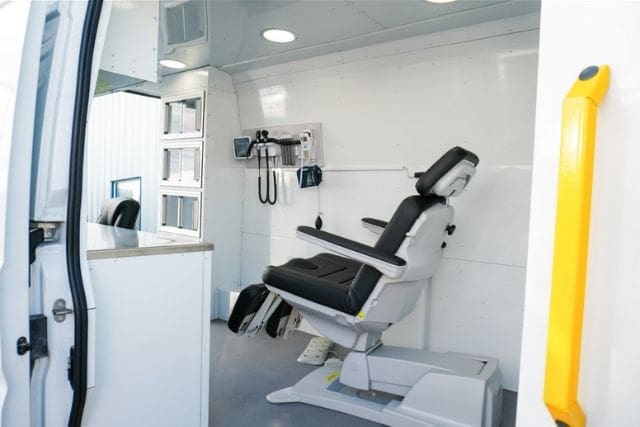
Mobile blood draw units are specially built vehicles designed to collect blood samples outside of a traditional lab setting. They are functional mobile medical spaces on wheels. These units include everything your team needs to draw blood safely and comfortably, from chairs to supplies storage and a proper sink for sanitation.
These vehicles aren’t one-size-fits-all either. They can be customized to match what your program needs. Some units are designed for high patient volume, while others are set up for quiet care in small communities. No matter the style, they help you serve people who can’t easily reach a clinic.
Here’s why mobile blood draw units are such a significant advancement.:
- Reach more people: Especially those in rural areas or seniors who can’t travel.
- Offer privacy and comfort: Patients feel safe and cared for in a space designed just for medical care.
- Stay compliant: These units meet health and safety standards just like any clinic.
- Bring care to work sites, schools, or homes: There is no need to wait for patients to come to you.
Mobile blood draw units make healthcare flexible and accessible, filling a big gap that traditional labs can’t.
What are traditional phlebotomy labs?
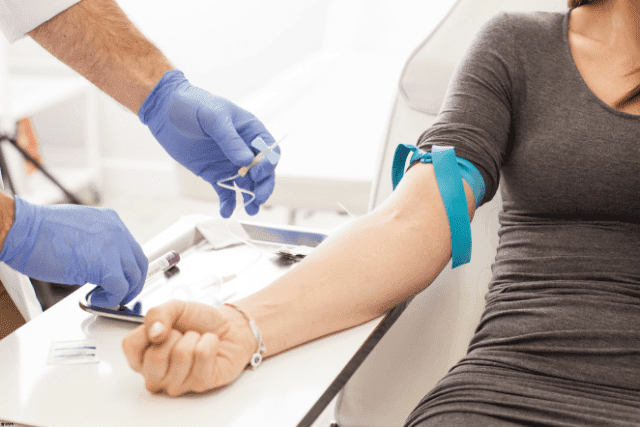
Phlebotomy labs are the familiar, fixed locations where patients go to get their blood drawn. You’ve likely seen these labs inside hospitals, clinics, or even as stand-alone buildings in busy medical centers. They are permanent spaces designed to collect, store, and prepare blood samples for testing.
Inside a phlebotomy lab, you’ll find everything set up for smooth and safe blood collection. There are special chairs for patients, supply storage, proper lighting, sanitation stations, and equipment that keeps samples at the right temperature until they head to the main lab for testing. These spaces are carefully built to follow health and safety rules to protect both patients and staff.
Phlebotomy labs also have trained staff ready to help a steady flow of patients all day long. Because they are in one place, they often serve large numbers of people from surrounding neighborhoods, workplaces, or doctors’ offices. In big cities like Chicago or New York, these labs are usually busy because they are close to so many patients.
Here’s what makes phlebotomy labs important:
- Permanent setup: Always ready with the right equipment in place.
- Handles high volume: Can see lots of patients quickly in one spot.
- Part of larger health centers: Usually located near hospitals or clinics.
- Trusted by the public: Many patients feel comfortable visiting familiar locations.
These labs are the steady workhorses of the healthcare system: reliable, well-equipped, and built to serve large populations from a central spot.
How are mobile blood draw units and fixed phlebotomy labs similar?
At first glance, mobile blood draw units and traditional phlebotomy labs might seem like completely different worlds. One moves. One stays put. But when you look closer, these two share some key things that matter to your healthcare program.
Both provide safe, professional environments for blood collection. Patients can expect clean, organized, and well-equipped spaces inside a mobile unit or a fixed lab. Each is designed to meet strict health and safety standards, protecting your staff and patients.
Trained phlebotomists run the show in both settings. It doesn’t matter if the blood draw happens in a van outside a factory or in a clinic in downtown Dallas, the person drawing the blood is properly trained to do the job right. Your team follows the same procedures no matter where they work.
Here’s what else they have in common:
- Proper storage and equipment: Mobile blood draw units and phlebotomy labs both carry temperature-controlled storage, sterile tools, and sanitation stations.

- HIPAA compliance: Protecting patient information matters in both places. Privacy and confidentiality remain top priorities, whether care happens on wheels or inside four walls.
- Comfort for patients: Both options offer proper seating, calming environments, and a professional setup to help nervous patients feel safe.
- Sample handling standards: No matter the setting, samples are labeled, stored, and transported carefully to ensure accurate testing later.
The heart of the service is the same: collecting blood safely, carefully, and respectfully. Both tools help you serve your community with high-quality care, just delivered in different ways.
How are mobile blood draw units and fixed phlebotomy labs different?
While mobile blood draw units and phlebotomy labs do similar work, they feel different when you take a closer look. These differences can really change how your program runs and who you reach.
- Location is the biggest difference: Phlebotomy labs stay in one place. Patients have to come to you. But with mobile blood draw units, your team drives straight to the patient. You can roll up to rural farms in Iowa, visit factories in Detroit, or even stop at a school in a small Texas town. Mobile units help you reach the folks who can’t or won’t come to a clinic.
- Flexibility sets them apart, too: A phlebotomy lab can’t pack up and go to a health fair or pop-up event in California. But a mobile blood draw unit can park right outside, ready to serve. These units can also handle emergency needs, like disaster relief areas or remote camps.
- Cost plays a role: Starting a new fixed phlebotomy lab can cost a fortune in construction, permits, and space. A mobile blood draw unit is usually a lower upfront investment and skips the need for building space. Plus, it covers many locations without needing multiple buildings.
- Staffing is different: A traditional lab might need more staff, such as receptionists, techs, and cleaners. A mobile blood draw unit can often be run by a small, cross-trained team.
- Patient convenience changes everything: Patients don’t have to drive, take time off work, or arrange childcare when you come to them.
Here’s a quick recap of the differences:
- Phlebotomy labs: Stay put, cost more to build, need more staff.
- Mobile blood draw units: Travel to patients, flexible, lower setup cost, simpler team.
Different tools for different jobs, but both serve an important role in patient care.
What problems do mobile blood draw units solve?
If you’re thinking about investing in mobile blood draw units, you’re probably wondering what gaps they can fill in your healthcare program. These units tackle several real problems that fixed phlebotomy labs often can’t reach.
Reaching underserved communities
One big issue is access. Many people live far from traditional labs. Think about rural towns in Montana or Native American reservations in Arizona. These places often have fewer healthcare facilities. For patients, traveling long distances means missing work, paying for rides, or just giving up on care. Mobile blood draw units bring services right to these communities. This helps catch health problems earlier and reduces costly hospital visits later.
Improving patient convenience and comfort
Not everyone feels comfortable walking into a busy clinic. Some patients become nervous or anxious about medical visits. Mobile blood draw units offer a more private, relaxed setting. You can park in familiar places, like community centers or workplaces, where people feel safe. This convenience can lower no-show rates and improve patient satisfaction.
Supporting large-scale health events
Mass testing events, vaccine drives, or health fairs need quick, flexible setups. Mobile blood draw units are perfect for these because they can move where people are. They help your organization scale up fast without waiting for labs to be built.
Filling gaps during emergencies
Natural disasters or public health crises often disrupt access to care. Floods, hurricanes, or even pandemics can close fixed labs or make travel unsafe. Mobile units can quickly reach affected areas, bringing critical blood draw services to people who might otherwise go without.
Reducing transportation and cost barriers
Patients who rely on public transit or don’t have cars often struggle to reach fixed labs. Mobile blood draw units lower these barriers by showing up nearby. This reduces missed appointments and helps your program use resources more efficiently.
Mobile blood draw units vs. fixed phlebotomy lab: Which option should you choose?
Choosing between mobile blood draw units and a fixed phlebotomy lab is a big decision. It depends on what fits your organization’s needs, your patients, and your budget. Here are a few things to consider to help you decide which option makes the most sense.
Think about your patient base
- Where are your patients? If many live far from a clinic or have trouble getting transportation, mobile blood draw units bring care to them.
- Do your patients prefer convenience? Mobile units make blood draws easier by coming to workplaces, schools, or community centers.
Consider your program’s goals
- Do you want to expand reach? Mobile blood draw units help you serve more people in more places, especially in rural or hard-to-reach areas.
- Are you focused on handling large volumes in one spot? A fixed phlebotomy lab can handle many patients at once in a permanent location.
Look at your budget and resources
- Fixed phlebotomy labs usually require bigger investments in space and equipment. Mobile blood draw units often cost less upfront and avoid building expenses.
- Mobile units can run with a smaller, flexible team. Fixed labs may need more staff for the front desk, cleaning, and tech support.
Think about flexibility
- Do you need to serve different communities on different days? Mobile blood draw units can move where you need them.
- Is your patient population stable and local? Then, a fixed phlebotomy lab might be simpler and more efficient.
Brand visibility
- Mobile units act like rolling billboards, spreading your message wherever they go.
- Fixed labs rely more on local advertising and word-of-mouth to build awareness.
Ready to learn more about mobile blood draw units?
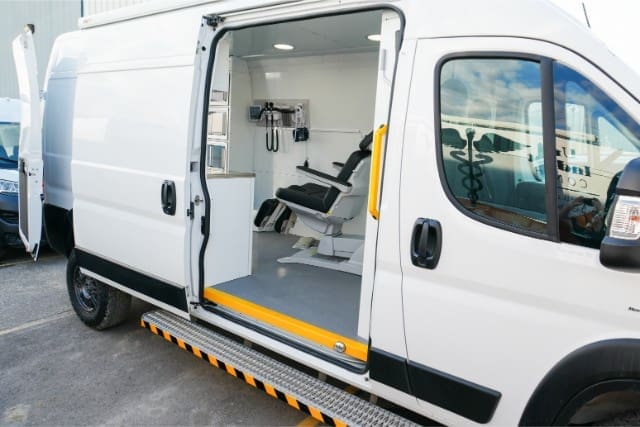
You came here to find out if mobile blood draw units or fixed phlebotomy labs are better for your organization. Choosing the right option can help you serve patients better and meet your goals.
- Mobile blood draw units bring lab services to your patients and are flexible for different locations.
- Fixed phlebotomy labs are permanent buildings that handle lots of patients in one place.
- Both options share goals like safety and accuracy, but differ in costs, setup, and reach.
- Consider your program’s needs, budget, and how you want to serve your community.
At AVAN Mobility, we’ve built a strong reputation for making mobile health solutions that work. Our team knows how to design and build vehicles that fit real-world needs. With over a decade of experience and a passion for innovation, we help organizations like yours remove barriers to care. When you talk to our mobility experts, you’re talking to people who care deeply about your mission and success.
If you have questions or want to explore options, click the button below to connect with an expert who can guide you every step of the way.
If you’re not quite ready to chat, check out these helpful articles to learn more:
- Mobile medical van customization: Take a look at some of your customization options.
- How much does a mobile medical unit cost in the U.S.? Knowing the cost will help you plan your budget more appropriately.
- Buying a mobile medical van: Your process with AVAN Mobility: Get a clear glimpse of your buying process with us!
